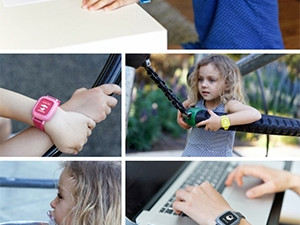
While smart watches and wearables have been around for less than half a decade, Qualcomm says they will soon expand way beyond current capabilities and it will become common for most people to use multiple wearables.
This is the third year wearables were a focus at the annual Mobile World Congress.
"It is a very new, emerging space but growing fast, and there is a lot of innovation," says Pankaj Kedia, Qualcomm senior director of product management and wearables.
He shared with ITWeb his predictions of what can be expected from wearable technology over the next decade.
All about the sensors
"How smart a watch is has a direct relationship with what type of sensors it has," says Kedia. "Therefore, we will see better sensors being developed; ones which know what type of environment users are in, and ones that do better health readings."
He says sensors will be put in shoes to create a more accurate step-counter than the ones currently used on wrists, and so that data can be fed back to the wearer to help them improve their running or walking style.
Beyond the wrist
Wearables will no longer be synonymous with smart watches in the future, says Kedia. The term will come to mean anything that is worn and is connected.
"This could include clothing," says Kedia, who gave the example of a smart running shirt which expands and contracts its fibres depending on what it senses the user's body temperature to be, compared to the outer environment.
Smart chic
"Over time, wearables will get smaller and sleeker and thinner, as with all new technologies." This means there will be more variety and could start appealing to people who previously were not interested in a bulky, 'showy' device.
Kedia notes more and more fashion brands will start to release their own smart watches and other wearables. He says initially it was tech companies releasing wearables, but now it is increasingly traditional luxury watch brands.
The Qualcomm Snapdragon Wear chipset and technology is available in over 100 wearables and will appear in many more this year.
Tracking the kids
Wearables for children will become more commonplace, says Kedia. This is because parents want to know where their young children are at all times, but do not want to give them a fully functional smartphone.
Children's wearables are already available but Kedia predicts they will become more prevalent and that children's brands, such as Disney, will start pushing out their own products in this space.
The list goes on
Kedia foresees wearables will be used to control connected devices such as lights, doors and kitchen appliances through voice and touch command.
As artificial intelligent assistants become more persuasive on phones, so will they on wearables, says Kedia, who thinks an announcement from Google about Google Assistant for wearables is not far off.
He also notes most wearables in the future will have a modem inside them, and not only Bluetooth or WiFi capabilities. This will allow users to leave their phones behind but still be connected.
Share